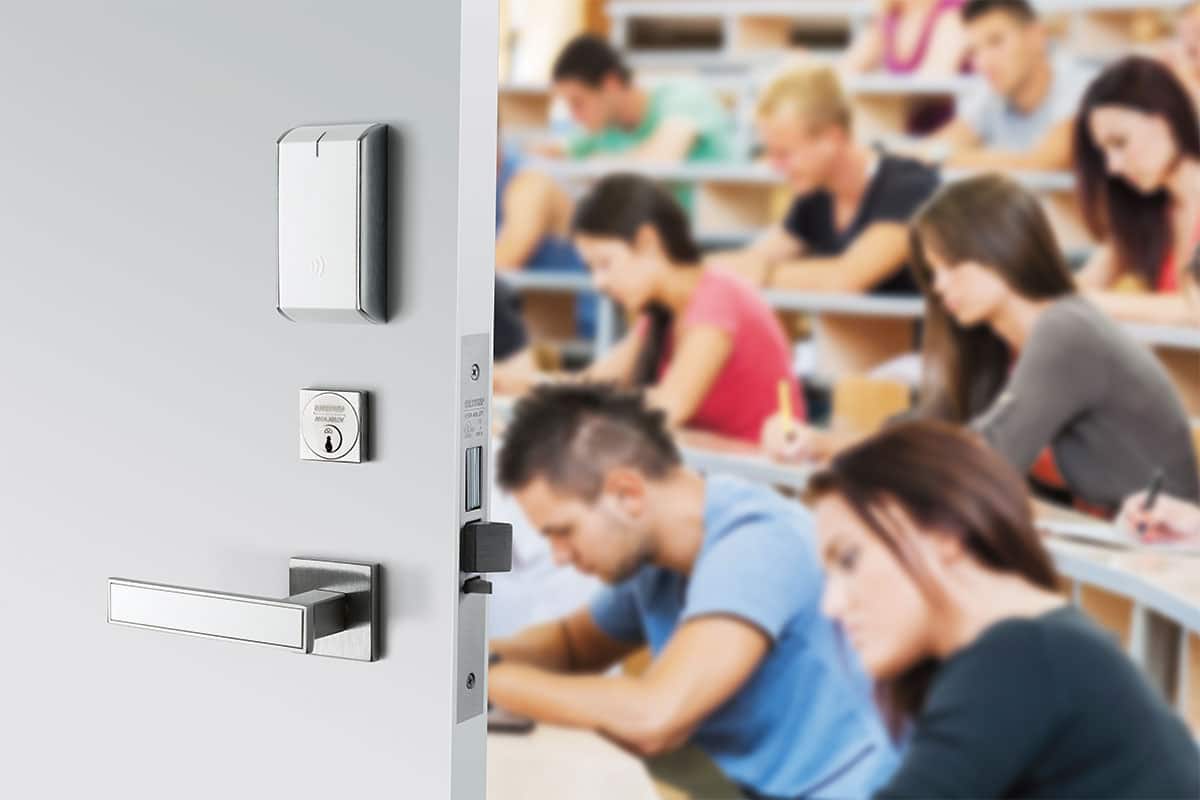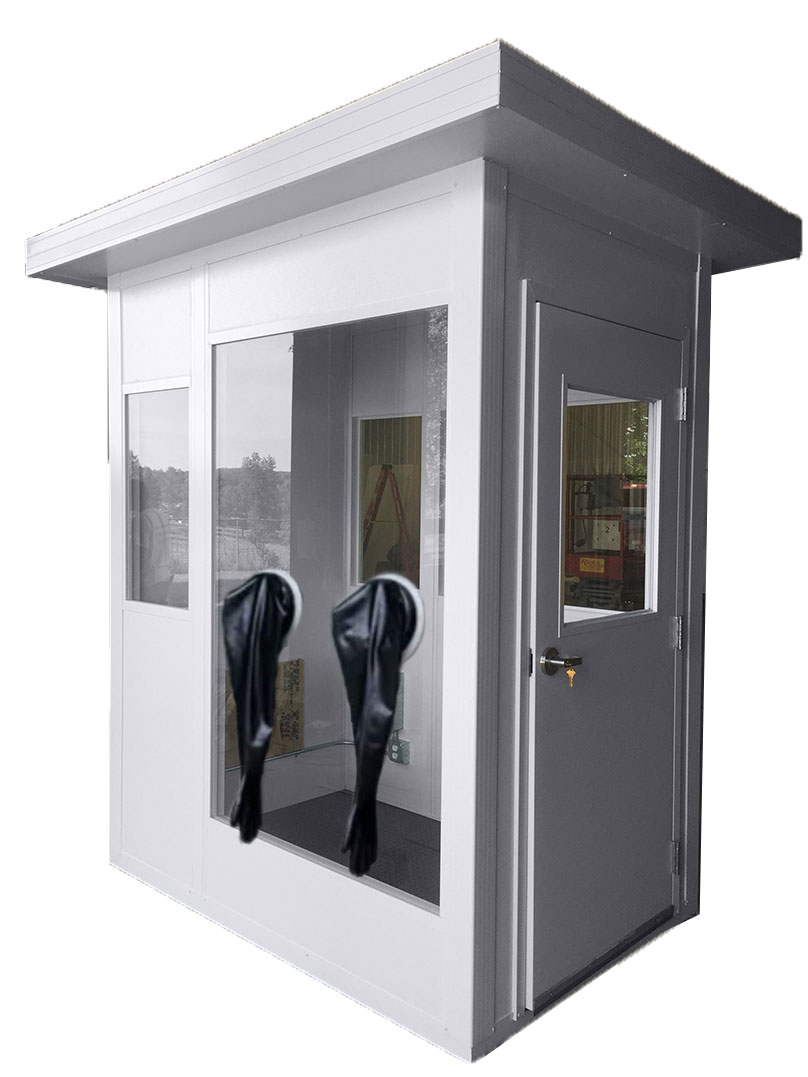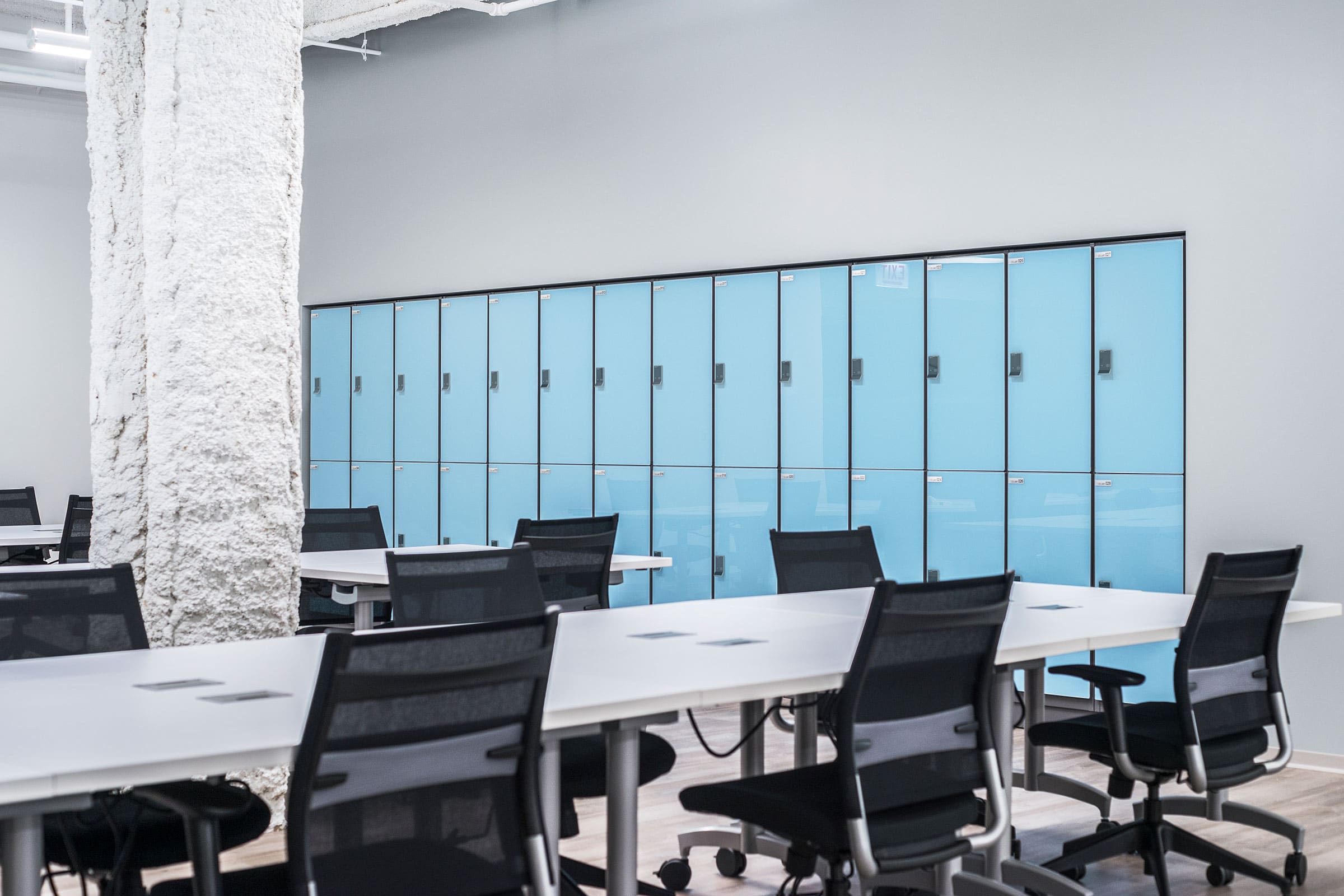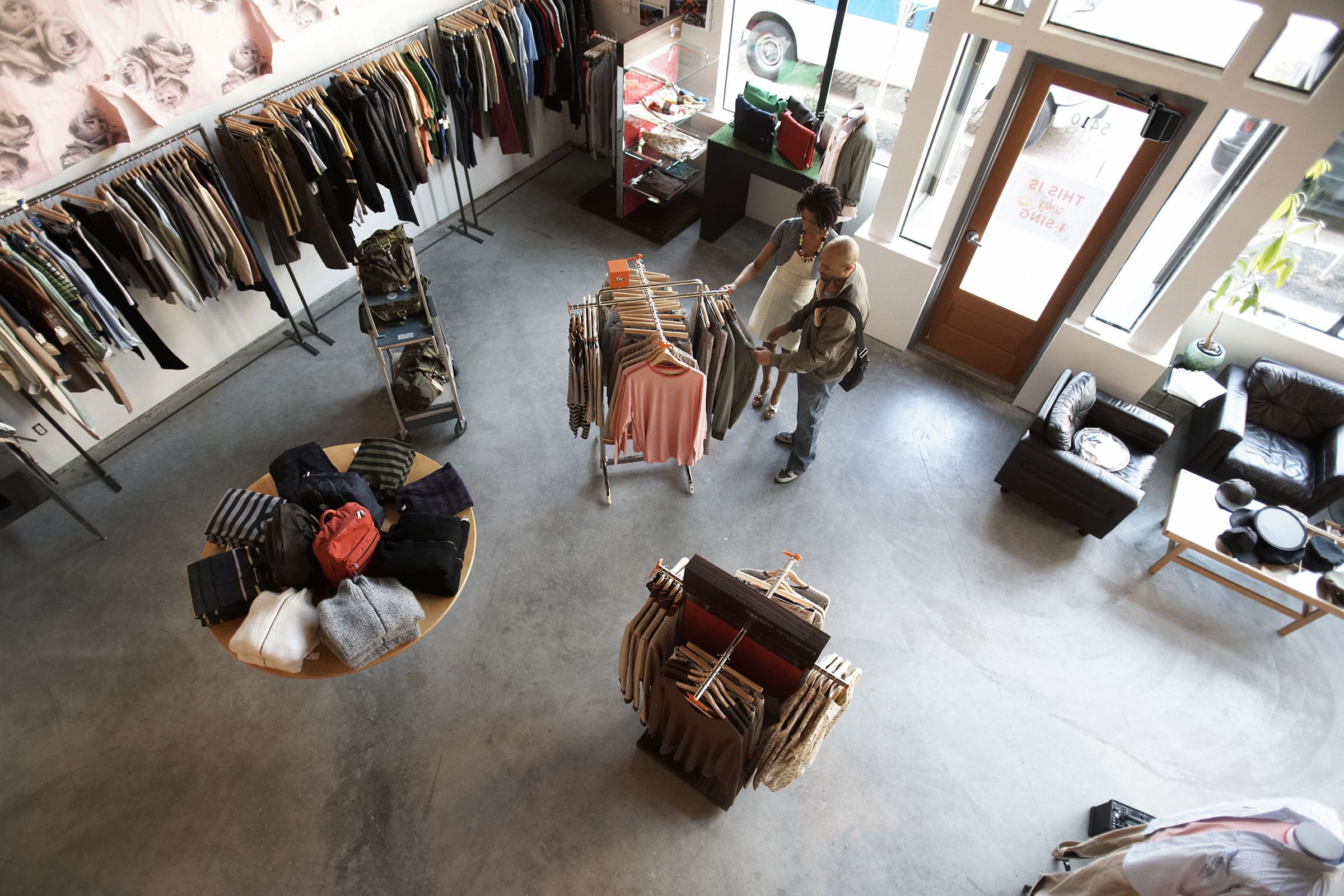Story at a glance:
- Secure, remote locking doors make schools safer in case of an intruder.
- Digital access systems ensure the right personnel access spaces while everyone else is denied.
- Biometrics can be used to grant access to especially sensitive spaces and information.
In any kind of commercial space, it’s likely some degree of access control is in place.
Access control ranges from guards at retail stores to biometric scanners on computers to secure doors that make for safe school design. Authorizing access to a building is a big responsibility and one that is greatly assisted by new technologies and building solutions.
Access control means determining who has access to a building or even a set of information at any time, and making sure they and only they are capable of accessing it. The benefits of access control include knowing when people come and go and reducing theft and threats to safety. Above all, access control exists to keep a property and those who use it secure.
Although the various kinds of access control go by different names, they boil down to physical, meaning people actually entering a space, and logical, meaning people accessing a database or information. In either case, access control recognizes the entrant and allows them access while rejecting those who are not authorized and triggering warnings or other security systems.
In today’s society many forms of access control continue to revolve around authorizing a person by their status or position, but others revolve around the overwhelming need to keep certain individuals out. Here are five applications of access control that keep property and people secure.
5 Types of Access Control
1. Secure locking doors

ASSA ABLOY’s remote locking doors hold off an attacker for at least four minutes. Photo courtesy of ASSA ABLOY
Access control is especially necessary in case of security threats. A dismally topical issue facing our society is the threat of intruders, particularly in schools. In the classroom, office, retail space, or really anywhere, locked doors designed to resist attack can truly be the difference between life and death.
“The ‘Columbine lock’ is a common term that refers to locking mechanisms that allow you to lock them from inside [the classroom] without going outside into harm’s way. It was the leading technology up until recently,” says Brian Whitmore, chief executive officer and president of Studio W Architects.
These locking mechanisms have evolved beyond locking inside the classroom to locking from just about anywhere. Thanks to Studio W’s renovation of Bayshore Elementary School, the secretary can lock all doors in the school from the computer in the main office, for example.
In an intense R&D process, ASSA ABLOY and School Guard Glass have designed doors for classrooms that can withstand every effort of an attacker for at least four minutes. With advanced glass and a remote locking system operated with clickers, these doors are more reliable and better tested than the standard desk blockade strategy.
2. Guard booths and fixed checkpoints

Concept design of a Panel Built swab testing booth that has large windows and glove ports to provide a safe, temperature-controlled testing space. Photo courtesy of Panel Built
Some businesses and organizations, from industrial sites to country clubs, require an authorization process to verify the person is who and what they claim to be from the moment they drive or walk onto the property. This can be handled by installing guard booths or checkpoints.
Such access control points can be operated with a code, access card, fob, or other technology. Because the access granted is not to a specific room or locker but instead to the property as a whole, there is little distinction made between individual entrants.
But in the age of COVID-19 and social distancing, individual screening is more important and trickier to perform well than ever. Although many businesses have transitioned to working from home, plenty, particularly grocery stores, manufacturers, and other essential businesses, still require in-person labor. At these operations, temperature screening, symptom checks, and even rapid testing stations help employees stay safe by ensuring only healthy people enter the building.
Panel Built’s rapid construction screening booths exist for just this purpose. Panel Built offers customization based on what a business requires of the screening booth, be it temperature control, transportability, or glove ports.
3. Digital access systems

With Digilock you can easily assign access to filing cabinets containing sensitive materials. Photo courtesy of Digilock
Digital locks are common everywhere from hotel to hospital design. An access control system allows authorization to be granted both individually and universally. For example, every guest at the hotel has card access to the pool, but only the current guests of room 134 have card access to enter their room.
This also comes into play in the medical industry, where locked carts and compartments are used to store sensitive materials like medical supplies and personal information. “With an integrated access control system, specific personnel can be given access to one area and excluded from another. In the past each department may have been managed separately, but digital locks employ a single footprint, reducing complexity and saving everyone time,” Richard Shaffer, a senior account executive at Digilock, told gb&d.
This is also useful in a retail setting, where employees store personal belongings in lockers during their shifts. The single footprint of digital locks allows different employees to utilize the same lockers when working separate shifts.
While access cards are just one provider of digital access, they are widespread in part because they can also visually provide information to verify a person’s authorization. Other options include RFID fobs and keycode access.
4. Touchless access systems

Delta Controls touchless access systems allow smartphones to grant access and control room temperature and other environmental factors.
Access can be controlled using entirely touchless digital systems as well, Robert Hemmerdinger of Delta Controls told gb&d. Especially helpful in pandemic times, touchless access means individuals are authorized by the things they hold with them at all times: like a personal smartphone.
Although a mobile phone is not necessarily tied to an individual, passwords and other verification factors can be implemented for increased security. Once the authorized person gains access, the touchless experience can continue as the smartphone may also control the lights, temperature, and other elements of the physical space.
This form of security is especially useful in professional environments that require hands-on work, like medical facilities and labs.
5. Biometric verification
In case you want to go even more James Bond with your access control, biometric verification is also an option. Biometrics used include fingerprints, palm scans, iris scans, facial recognition, and even voice recognition.
While most other forms of access control depend upon the possession of objects like key cards or information like a password, biometric verification relies upon the actual genetics of the entrant, which cannot simply be possessed. This makes biometric access convenient to use and extremely difficult to deceive.
Biometrics are therefore best used in very high-security buildings where sensitive research is performed or society-defining decisions are made, for example. It is a great solution for specific areas that require high clearance, but is not nearly so helpful in other spaces that require more general access control, like for a library design or theme park lockers.




